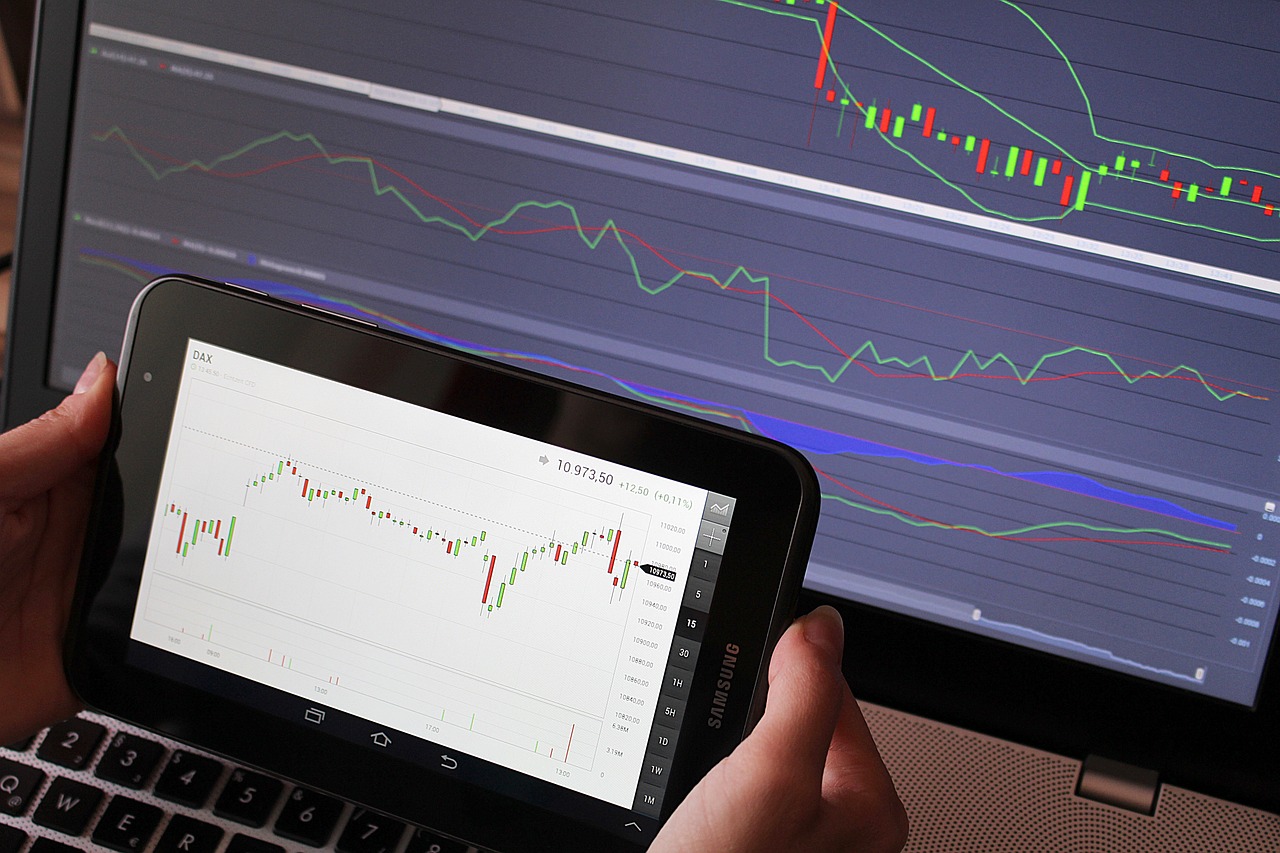The Role of Sentiment Analysis in Trading
In the fast-paced world of trading, where every second counts and the stakes are high, understanding the emotional pulse of the market can be a game-changer. Sentiment analysis has emerged as a vital tool for traders aiming to decode the complex language of market psychology. But what exactly does this mean? Well, sentiment analysis involves evaluating and interpreting the emotions expressed in various forms of text data, particularly in financial markets. By gauging public sentiment towards stocks, commodities, and even entire markets, traders can make more informed decisions that align with the prevailing emotions of investors.
Imagine trying to navigate a crowded room filled with people, each expressing different feelings about a particular topic. Some are excited, while others are anxious or skeptical. Now, picture yourself as a trader in the financial markets, where similar emotions are at play but on a much larger scale. Understanding these emotions can help you predict price movements and capitalize on trends before they become apparent to the average investor. This is where sentiment analysis shines, offering a lens through which traders can view the often chaotic and unpredictable nature of the market.
Furthermore, the importance of market sentiment cannot be overstated. It reflects the overall attitude of investors towards a specific security or the financial market as a whole. When investors are optimistic, they are more likely to buy, driving prices up. Conversely, when fear grips the market, selling often ensues, leading to price declines. Thus, sentiment analysis acts as a barometer for traders, helping them gauge whether to enter or exit positions based on the emotional climate.
Sentiment analysis, at its core, is about interpreting emotions. It involves sifting through vast amounts of text data—think news articles, social media posts, and financial reports—to extract the sentiment behind the words. This process is particularly useful in financial markets, where public sentiment can significantly influence the behavior of stocks and commodities. By analyzing the language used in these texts, traders can discern whether the sentiment is positive, negative, or neutral.
Market sentiment serves as a critical indicator of investor behavior. It not only influences buying and selling decisions but also plays a pivotal role in price movements. For instance, during a bullish phase, positive sentiment can lead to increased buying, pushing prices higher. On the flip side, in a bearish market, negative sentiment can trigger panic selling, resulting in sharp declines. Understanding these dynamics equips traders with the insights needed to navigate the market effectively.
There are various sentiment indicators that traders utilize to gauge market psychology. Some of the most notable ones include:
- Fear & Greed Index: This index measures the emotions driving the market, helping traders understand whether investors are feeling fearful or greedy.
- Social Media Sentiment: Analyzing social media platforms can provide real-time insights into public sentiment regarding specific stocks or market trends.
- Market Surveys: Surveys conducted among investors can reveal their feelings about the market, offering valuable data for sentiment analysis.
When it comes to sentiment analysis, there are two primary approaches: quantitative and qualitative. Quantitative sentiment analysis relies on numerical data and algorithms to interpret sentiment, often using statistical models to predict market movements. On the other hand, qualitative analysis focuses on understanding the context and nuances of textual data. Both methods are essential for a comprehensive understanding of market sentiment, and savvy traders often use a combination of the two to enhance their strategies.
Traders can gather sentiment data from a multitude of sources, which enhances their trading strategies through diverse insights. Some of the primary sources include:
- News Articles: Financial news can provide immediate insights into market sentiment.
- Social Media Platforms: Twitter, Reddit, and other platforms are rich with real-time sentiment data.
- Financial Reports: Earnings reports and press releases often reveal the sentiment of company management and analysts.
To effectively analyze sentiment, traders employ numerous tools and techniques. Natural language processing (NLP) and machine learning algorithms are at the forefront of this analysis, allowing for the efficient processing of vast amounts of data. These technologies enable traders to identify patterns and trends that might not be immediately apparent, providing a significant edge in decision-making.
Incorporating sentiment analysis into trading strategies can dramatically enhance decision-making processes. It allows traders to react swiftly to market changes and capitalize on emerging trends. For example, if a trader notices a sudden spike in positive sentiment around a particular stock, they might decide to buy before the price rises further. Conversely, if negative sentiment begins to dominate, they might choose to sell or avoid that stock altogether.
Examining real-world case studies where sentiment analysis played a pivotal role can provide invaluable lessons for traders. For instance, during the COVID-19 pandemic, many traders relied on sentiment analysis to gauge public reaction to lockdown measures and vaccine announcements, allowing them to make timely trades based on emerging trends.
Despite its advantages, sentiment analysis is not without challenges. Issues such as data accuracy and interpretation difficulties can hinder its effectiveness. Traders must navigate these challenges to effectively utilize this powerful tool in their trading endeavors. Moreover, the emotional landscape of the market can change rapidly, requiring traders to stay vigilant and adaptable.
Q: How can sentiment analysis improve my trading strategy?
A: By providing insights into market psychology, sentiment analysis allows you to make more informed decisions, helping you anticipate price movements based on public sentiment.
Q: What are the best tools for sentiment analysis?
A: Some popular tools include natural language processing software, social media analytics platforms, and sentiment analysis APIs that aggregate data from various sources.
Q: Can sentiment analysis predict market movements accurately?
A: While sentiment analysis can provide valuable insights, it is not foolproof. It should be used in conjunction with other analysis methods for the best results.

What is Sentiment Analysis?
Sentiment analysis, often referred to as opinion mining, is the fascinating process of evaluating and interpreting emotions expressed in text data. In the world of finance, this technique has become a cornerstone for traders and investors alike, as it allows them to gauge public sentiment towards various stocks, commodities, and even entire markets. Imagine being able to tap into the collective emotions of thousands of investors and analysts, all expressed in tweets, news articles, and financial reports. This is precisely what sentiment analysis enables.
At its core, sentiment analysis involves the use of algorithms and natural language processing (NLP) to determine whether the sentiment behind a piece of text is positive, negative, or neutral. This can be particularly useful in financial markets, where emotions can often drive price movements more than fundamental data. For instance, a single tweet from a prominent figure can lead to significant fluctuations in a stock's price. Thus, understanding the prevailing sentiment can provide traders with a competitive edge.
To break it down further, sentiment analysis can be categorized into several key components:
- Textual Analysis: This involves analyzing written text to extract insights about sentiment. It can include everything from social media posts to news articles.
- Emotion Detection: This goes beyond just positive or negative and seeks to identify specific emotions such as joy, anger, or fear.
- Trend Analysis: By tracking sentiment over time, traders can identify emerging trends that may signal potential market movements.
In essence, sentiment analysis serves as a lens through which traders can view the emotional landscape of the market. By leveraging this tool, traders can better understand the psychology behind market movements, allowing them to make more informed decisions. Whether it's analyzing the latest headlines or monitoring social media chatter, sentiment analysis offers a unique perspective that traditional financial metrics may overlook.

The Importance of Market Sentiment
This article explores how sentiment analysis influences trading strategies, market predictions, and investment decisions, highlighting its importance in understanding market psychology and improving trading outcomes.
Sentiment analysis refers to the process of evaluating and interpreting emotions expressed in text data, particularly useful in financial markets for gauging public sentiment towards stocks and commodities.
Market sentiment is like the pulse of the financial world; it reflects the overall attitude of investors towards a particular security or financial market. Imagine walking into a crowded room where everyone is buzzing with excitement about a new product. That energy, that vibe, can be contagious and influence decisions. Similarly, in trading, the general mood of investors can heavily sway buying and selling decisions.
When investors are feeling optimistic, they are more likely to buy stocks, driving prices up. Conversely, when fear grips the market, selling may ensue, leading to price declines. This emotional rollercoaster not only affects individual stocks but can ripple through entire sectors and markets. Understanding this sentiment can be the key to unlocking better trading outcomes.
To illustrate the significance of market sentiment, consider the following points:
- Price Movements: Market sentiment is often a precursor to price movements. A surge in positive sentiment can lead to bullish trends, while negative sentiment can trigger sell-offs.
- Investment Decisions: Investors often rely on sentiment indicators to guide their decisions. An optimistic outlook may encourage long-term investments, while a pessimistic view might prompt caution.
- Market Psychology: Understanding the psychology behind market sentiment can help traders anticipate shifts in market dynamics, allowing them to position themselves advantageously.
In essence, market sentiment serves as a powerful indicator. Traders who can tap into this sentiment can make more informed decisions, ultimately leading to improved trading strategies and outcomes. The ability to gauge whether the market is leaning towards greed or fear can be the difference between a successful trade and a missed opportunity.
Various sentiment indicators, such as the Fear & Greed Index and social media sentiment, provide insights into market psychology, helping traders make informed decisions based on prevailing emotions.
Quantitative sentiment analysis utilizes numerical data and algorithms, while qualitative analysis focuses on interpreting textual data, both essential for a comprehensive understanding of market sentiment.
Traders can gather sentiment data from multiple sources, including news articles, social media platforms, and financial reports, enhancing their trading strategies through diverse insights.
Numerous tools and techniques, such as natural language processing and machine learning algorithms, are employed in sentiment analysis to analyze vast amounts of data efficiently and accurately.
Incorporating sentiment analysis into trading strategies can enhance decision-making processes, allowing traders to react swiftly to market changes and capitalize on emerging trends.
Examining real-world case studies where sentiment analysis played a pivotal role in successful trading strategies can provide valuable lessons for traders looking to improve their approaches.
Despite its advantages, sentiment analysis faces challenges such as data accuracy and interpretation difficulties, which traders must navigate to effectively utilize this powerful tool in their trading endeavors.
Q: What is sentiment analysis in trading?
A: Sentiment analysis in trading refers to the evaluation of emotions expressed in text data to gauge public sentiment towards stocks and markets, influencing trading decisions.
Q: How does market sentiment affect stock prices?
A: Market sentiment influences investor behavior; positive sentiment can lead to increased buying, driving prices up, while negative sentiment may trigger selling, causing prices to fall.
Q: What are some common sentiment indicators?
A: Common sentiment indicators include the Fear & Greed Index, social media sentiment, and investor surveys, which help traders assess market psychology.
Q: Can sentiment analysis predict market trends?
A: While sentiment analysis can provide insights into market trends, it is not foolproof. It should be used alongside other analysis methods for better accuracy.

Types of Sentiment Indicators
This article explores how sentiment analysis influences trading strategies, market predictions, and investment decisions, highlighting its importance in understanding market psychology and improving trading outcomes.
Sentiment analysis refers to the process of evaluating and interpreting emotions expressed in text data, particularly useful in financial markets for gauging public sentiment towards stocks and commodities.
Market sentiment reflects the overall attitude of investors towards a particular security or financial market, influencing buying and selling decisions, thus playing a critical role in price movements.
Sentiment indicators are vital tools that help traders gauge the mood of the market. They can be broadly categorized into several types, each providing unique insights into investor psychology. Understanding these indicators can significantly enhance trading strategies and decision-making processes.
One of the most popular sentiment indicators is the Fear & Greed Index. This index, created by CNNMoney, measures the emotions driving the market by analyzing various factors such as volatility, market momentum, and social media sentiment. When the index indicates extreme fear, it often suggests that investors are too pessimistic, which can present buying opportunities. Conversely, extreme greed may indicate that the market is overbought, signaling a potential downturn.
Another significant type of sentiment indicator comes from social media sentiment analysis. With the rise of platforms like Twitter and Reddit, traders can now track real-time public sentiment towards specific stocks. For instance, if a stock is trending positively on social media, it may indicate a bullish sentiment, prompting traders to consider buying. On the other hand, negative sentiment can serve as a warning sign, suggesting that it might be time to sell or avoid certain stocks.
Additionally, there are poll-based sentiment indicators that gather opinions directly from investors. Surveys and polls, such as the American Association of Individual Investors (AAII) Sentiment Survey, provide insights into how individual investors feel about the market's direction. These indicators can be particularly useful as they reflect the collective mindset of retail investors, who often react differently than institutional investors.
In summary, understanding the various types of sentiment indicators—such as the Fear & Greed Index, social media sentiment, and poll-based indicators—can empower traders to make more informed decisions. By incorporating these insights into their trading strategies, they can better anticipate market movements and improve their overall trading outcomes.
Incorporating sentiment analysis into trading strategies can enhance decision-making processes, allowing traders to react swiftly to market changes and capitalize on emerging trends.
Examining real-world case studies where sentiment analysis played a pivotal role in successful trading strategies can provide valuable lessons for traders looking to improve their approaches.
Despite its advantages, sentiment analysis faces challenges such as data accuracy and interpretation difficulties, which traders must navigate to effectively utilize this powerful tool in their trading endeavors.
- What is the Fear & Greed Index? - The Fear & Greed Index is a tool that gauges market sentiment by analyzing various factors, helping traders understand whether the market is in a state of fear or greed.
- How can social media sentiment affect trading? - Social media sentiment can provide real-time insights into public opinion about stocks, influencing traders' decisions based on bullish or bearish trends.
- What are poll-based sentiment indicators? - Poll-based sentiment indicators gather opinions from investors through surveys, reflecting their feelings about market trends and potential movements.

Quantitative vs. Qualitative Analysis
When it comes to sentiment analysis, understanding the difference between quantitative and qualitative analysis is crucial for traders aiming to enhance their strategies. Quantitative analysis is all about numbers; it uses statistical methods and algorithms to analyze data. Think of it as the mathematical backbone of sentiment analysis. Traders utilize numerical indicators, such as price movements and trading volumes, to gauge market sentiment. For example, if a stock's price has been rising steadily while trading volume increases, this can indicate a positive sentiment among investors. It's like watching a wave build momentum before it crashes onto the shore, signaling impending action.
On the other hand, qualitative analysis dives into the nuances of human emotion. This approach examines textual data, such as news articles, social media posts, and financial reports, to interpret the sentiment behind the words. Imagine trying to read between the lines of a heartfelt letter; qualitative analysis aims to capture the emotions and intentions that numbers alone can't convey. For instance, a trader might analyze tweets about a company to determine whether the sentiment is overwhelmingly positive or negative, even if the stock price remains stable. This can provide insights that numbers might overlook, helping traders to make more informed decisions.
Both methods have their strengths and weaknesses. Quantitative analysis can process vast amounts of data quickly, making it ideal for real-time trading decisions. However, it may miss the subtleties of market sentiment that qualitative analysis can capture. Conversely, while qualitative analysis provides rich insights into market psychology, it often requires more time and subjective interpretation, which can introduce bias. To illustrate this, consider the following table:
| Aspect | Quantitative Analysis | Qualitative Analysis |
|---|---|---|
| Data Type | Numerical data | Textual data |
| Speed | Fast processing | Slower interpretation |
| Insights | Statistical trends | Emotional nuances |
| Bias | Less prone to bias | Potential for bias |
In practice, the most effective trading strategies often integrate both quantitative and qualitative analyses. By combining the speed and efficiency of quantitative methods with the depth and emotional insight of qualitative approaches, traders can gain a more comprehensive view of market sentiment. It’s like having a powerful engine (quantitative) paired with a finely tuned driver (qualitative) guiding the vehicle of trading decisions. This holistic approach can help traders not only react to market changes but also anticipate them, enabling them to stay ahead of the curve.
Ultimately, whether a trader leans more towards quantitative or qualitative analysis often depends on their personal trading style and the specific market conditions. The key takeaway is that both methods are valuable tools in the trader's toolkit, and understanding when and how to use each can significantly enhance trading outcomes.
- What is sentiment analysis? Sentiment analysis is the process of evaluating emotions expressed in text data, particularly useful in financial markets.
- Why is market sentiment important? Market sentiment reflects the overall attitude of investors, influencing buying and selling decisions, and playing a critical role in price movements.
- What are the main types of sentiment indicators? Common sentiment indicators include the Fear & Greed Index and social media sentiment analysis.
- How can I integrate sentiment analysis into my trading strategy? By using sentiment analysis tools and techniques, traders can enhance their decision-making processes and react swiftly to market changes.

Sources of Sentiment Data
This article explores how sentiment analysis influences trading strategies, market predictions, and investment decisions, highlighting its importance in understanding market psychology and improving trading outcomes.
Sentiment analysis refers to the process of evaluating and interpreting emotions expressed in text data, particularly useful in financial markets for gauging public sentiment towards stocks and commodities.
Market sentiment reflects the overall attitude of investors towards a particular security or financial market, influencing buying and selling decisions, thus playing a critical role in price movements.
Various sentiment indicators, such as the Fear & Greed Index and social media sentiment, provide insights into market psychology, helping traders make informed decisions based on prevailing emotions.
Quantitative sentiment analysis utilizes numerical data and algorithms, while qualitative analysis focuses on interpreting textual data, both essential for a comprehensive understanding of market sentiment.
When it comes to sentiment analysis, the are as diverse as the emotions they aim to quantify. Traders can gather valuable insights from a variety of platforms and mediums, each offering unique perspectives on market sentiment. Here are some of the most prominent sources:
- News Articles: Financial news outlets provide timely updates and analyses that can sway investor sentiment. Traders often monitor headlines for shifts in tone or focus that may indicate changing market conditions.
- Social Media Platforms: Platforms like Twitter and Reddit have become hotspots for real-time discussions about stocks and commodities. The sentiment expressed in tweets or forum posts can be a leading indicator of market movements.
- Financial Reports: Earnings reports, forecasts, and analyst ratings are crucial in shaping investor expectations. The language used in these documents can reveal underlying sentiments that affect stock prices.
- Market Surveys: Surveys conducted by financial institutions or independent research firms can provide quantitative data on investor sentiment, giving traders a clearer picture of market psychology.
By tapping into these sources, traders can enhance their understanding of market dynamics and make more informed decisions. However, it's essential to critically assess the reliability and bias of each source, as misinformation can lead to misguided trading strategies.
Numerous tools and techniques, such as natural language processing and machine learning algorithms, are employed in sentiment analysis to analyze vast amounts of data efficiently and accurately.
Incorporating sentiment analysis into trading strategies can enhance decision-making processes, allowing traders to react swiftly to market changes and capitalize on emerging trends.
Examining real-world case studies where sentiment analysis played a pivotal role in successful trading strategies can provide valuable lessons for traders looking to improve their approaches.
Despite its advantages, sentiment analysis faces challenges such as data accuracy and interpretation difficulties, which traders must navigate to effectively utilize this powerful tool in their trading endeavors.
Sentiment analysis in trading involves evaluating the emotions and opinions expressed in various data sources to gauge the overall mood of the market, which can impact investment decisions.
Market sentiment is crucial because it influences investor behavior, which in turn affects stock prices and market trends. Understanding sentiment helps traders anticipate potential market movements.
Common sources include news articles, social media platforms, financial reports, and market surveys, each providing unique insights into investor sentiment.
You can integrate sentiment analysis by monitoring relevant news and social media, using sentiment analysis tools, and adjusting your trading strategies based on the prevailing market sentiment.

Sentiment Analysis Tools and Techniques
In the dynamic world of trading, sentiment analysis has become an indispensable tool for traders seeking to gain an edge. With the vast amount of data generated daily, the challenge lies in efficiently processing this information to extract meaningful insights. To tackle this, several advanced tools and techniques have emerged, leveraging cutting-edge technologies to analyze sentiment.
One of the most powerful techniques in sentiment analysis is Natural Language Processing (NLP). This technology allows computers to understand, interpret, and manipulate human language. By employing NLP, traders can analyze news articles, social media posts, and financial reports to gauge public sentiment. For instance, a trader might use NLP to scan Twitter feeds for mentions of a particular stock, identifying whether the sentiment is predominantly positive or negative. This real-time analysis can be crucial in making timely investment decisions.
Another essential component is Machine Learning (ML). Machine learning algorithms can process large datasets to identify patterns and correlations that might not be immediately obvious to human analysts. These algorithms can be trained on historical data to predict future sentiment trends. For example, an ML model might analyze past market reactions to earnings reports and use this information to forecast how the market will respond to similar reports in the future. The ability to learn from past data and adapt to new information makes ML a game-changer in sentiment analysis.
Moreover, traders often utilize sentiment indicators, which are quantitative measures derived from various data sources. These indicators can provide a snapshot of market sentiment at any given time. Some popular sentiment indicators include:
- Fear & Greed Index: This index gauges the emotions driving the market, helping traders understand whether the market is in a state of fear or greed.
- Put/Call Ratio: A high ratio may indicate bearish sentiment, while a low ratio could suggest bullish sentiment.
- Market Volatility Index (VIX): Often referred to as the "fear index," it measures market expectations of near-term volatility.
Additionally, sentiment analysis can be enhanced through the use of sentiment analysis APIs. These application programming interfaces allow traders to integrate sentiment analysis capabilities into their existing trading platforms. By utilizing APIs, traders can automate the process of gathering and analyzing sentiment data, thereby saving time and increasing efficiency.
As we delve deeper into the realm of sentiment analysis, it’s crucial to remember that while these tools and techniques are powerful, they are not infallible. Traders must always combine sentiment analysis with other forms of analysis, such as fundamental and technical analysis, to create a well-rounded trading strategy. By doing so, they can better navigate the complexities of the market and make informed investment decisions.
In conclusion, the landscape of trading is continually evolving, and the integration of sentiment analysis tools and techniques is reshaping how traders approach the market. By harnessing the power of NLP, ML, sentiment indicators, and APIs, traders can gain valuable insights into market psychology, ultimately leading to improved trading outcomes.
Q1: What is sentiment analysis?
A1: Sentiment analysis is the process of evaluating and interpreting emotions expressed in text data, providing insights into public sentiment regarding stocks and commodities.
Q2: How can sentiment analysis improve trading decisions?
A2: By understanding market sentiment, traders can make more informed decisions, react swiftly to market changes, and capitalize on emerging trends.
Q3: What are some common tools used for sentiment analysis?
A3: Common tools include Natural Language Processing (NLP), Machine Learning (ML) algorithms, sentiment indicators like the Fear & Greed Index, and sentiment analysis APIs.
Q4: Are there limitations to sentiment analysis?
A4: Yes, challenges include data accuracy, interpretation difficulties, and the need for a comprehensive understanding of market factors beyond sentiment.

Integrating Sentiment Analysis into Trading Strategies
Integrating sentiment analysis into trading strategies is like adding a secret ingredient to your favorite recipe—it can elevate your trading game to new heights! By analyzing the emotions and opinions reflected in market data, traders can gain a deeper understanding of market movements and investor behavior. This insight allows them to make more informed decisions and react promptly to shifts in market sentiment.
Imagine you're at a party, and you overhear a group of people excitedly discussing a new product launch. Their enthusiasm might signal that the product will be a hit, prompting you to invest in that company. Similarly, sentiment analysis helps traders gauge the mood of the market, which can be a powerful predictor of future price movements. By incorporating sentiment indicators into their trading strategies, traders can better anticipate market trends and improve their overall performance.
To effectively integrate sentiment analysis, traders can follow a few key steps:
- Identify Relevant Sentiment Indicators: Traders should focus on sentiment indicators that align with their trading goals. For instance, the Fear & Greed Index can provide insights into market emotions, while social media sentiment analysis can reveal public opinions on specific stocks.
- Combine with Technical Analysis: Sentiment analysis should complement traditional technical analysis. By aligning sentiment data with chart patterns and indicators, traders can enhance their decision-making process.
- Monitor Real-Time Data: The financial markets are constantly evolving, and sentiment can shift rapidly. Utilizing real-time sentiment analysis tools allows traders to stay ahead of the curve and capitalize on emerging trends.
Moreover, traders can utilize advanced tools like natural language processing (NLP) and machine learning algorithms to analyze vast amounts of data quickly. These technologies can sift through news articles, social media posts, and financial reports to extract valuable sentiment insights, making it easier for traders to adjust their strategies accordingly.
However, it's essential to remember that sentiment analysis is not foolproof. The market can be influenced by various factors, and emotions can sometimes lead to irrational decisions. Therefore, while sentiment analysis can provide valuable insights, it should be used in conjunction with other analytical methods for a well-rounded approach to trading.
In summary, integrating sentiment analysis into trading strategies can significantly enhance a trader's ability to navigate the complexities of the market. By understanding the emotions driving market movements, traders can make more informed decisions, react swiftly to changes, and ultimately improve their trading outcomes.
Q: What is sentiment analysis?
A: Sentiment analysis is the process of evaluating and interpreting emotions expressed in text data, particularly useful in financial markets for gauging public sentiment towards stocks and commodities.
Q: How can sentiment analysis improve trading strategies?
A: By understanding market sentiment, traders can anticipate price movements and make more informed decisions, enhancing their ability to capitalize on emerging trends.
Q: What tools are available for sentiment analysis?
A: Traders can use various tools, including natural language processing software and sentiment analysis platforms, to analyze large volumes of data from news articles, social media, and financial reports.
Q: Are there limitations to sentiment analysis?
A: Yes, sentiment analysis can face challenges such as data accuracy and interpretation difficulties. It's essential to use it alongside other analysis methods for the best results.

Case Studies of Successful Sentiment Analysis
In the dynamic world of trading, sentiment analysis has proven to be a game-changer for many investors. One notable case study involves the 2016 U.S. Presidential Election, where traders utilized sentiment analysis to gauge the public's mood towards candidates. As the election approached, social media sentiment indicated a surge in positive feelings towards a particular candidate. Traders who acted on this information saw significant gains as the market reacted to the outcome. This example illustrates how sentiment can often precede market movements, providing savvy traders with an edge.
Another compelling case study comes from the cryptocurrency market. In early 2021, a surge in Bitcoin's price was closely tied to sentiment analysis derived from Twitter. Analysts noted a spike in positive tweets and hashtags related to Bitcoin, which correlated with a dramatic price increase. Traders who monitored these sentiment indicators were able to enter positions early, capitalizing on the bullish trend before it became mainstream news. This scenario highlights the importance of real-time sentiment analysis in fast-moving markets.
Moreover, the Fear & Greed Index, a popular sentiment indicator, has been instrumental for many traders. For instance, in March 2020, as the COVID-19 pandemic began to impact global markets, the Fear & Greed Index plunged into extreme fear territory. Savvy investors who recognized this sentiment shift took advantage of the situation, buying undervalued stocks when others were panicking. This counterintuitive approach, informed by sentiment analysis, allowed them to profit as the market recovered later that year.
To further illustrate the effectiveness of sentiment analysis, consider a table summarizing key sentiment indicators and their outcomes:
| Case Study | Sentiment Indicator | Outcome |
|---|---|---|
| 2016 U.S. Presidential Election | Social Media Sentiment | Significant market gains for early traders |
| Bitcoin Surge (2021) | Twitter Sentiment Analysis | Profitable positions for early adopters |
| COVID-19 Market Reaction | Fear & Greed Index | Profits from buying during extreme fear |
Ultimately, these case studies underscore the critical role that sentiment analysis plays in trading. By understanding and interpreting market emotions, traders can make informed decisions that lead to successful outcomes. The ability to react to sentiment shifts can be the difference between profit and loss, making sentiment analysis an invaluable tool in the arsenal of modern traders.
What is sentiment analysis?
Sentiment analysis is the process of evaluating and interpreting emotions expressed in text data, particularly useful in financial markets for gauging public sentiment towards stocks and commodities.
How can sentiment analysis improve trading strategies?
By incorporating sentiment analysis into trading strategies, traders can enhance their decision-making processes, allowing them to react swiftly to market changes and capitalize on emerging trends.
What are some common sources of sentiment data?
Traders can gather sentiment data from news articles, social media platforms, financial reports, and various market sentiment indicators.
Are there limitations to sentiment analysis?
Yes, sentiment analysis faces challenges such as data accuracy and interpretation difficulties, which traders must navigate to effectively utilize this powerful tool in their trading endeavors.

Challenges and Limitations of Sentiment Analysis
While sentiment analysis is a powerful tool for traders, it is not without its challenges and limitations. Understanding these hurdles is crucial for effectively leveraging sentiment data in trading strategies. One of the primary challenges is the accuracy of data. Sentiment analysis relies heavily on the input data, which can often be noisy or biased. For instance, a single negative tweet about a company can skew the overall sentiment, leading traders to make decisions based on misleading information.
Moreover, the interpretation of emotions in text is inherently subjective. Different people may express similar sentiments in various ways, making it challenging for algorithms to accurately gauge the overall market mood. For example, sarcasm or irony can easily be misinterpreted by sentiment analysis tools, leading to erroneous conclusions. As a trader, relying solely on automated sentiment analysis without a human touch can result in missed opportunities or unnecessary losses.
Another significant limitation is the contextual understanding of language. Sentiment analysis tools often struggle to comprehend the context in which certain words or phrases are used. A statement like "The stock is crashing!" could be a factual observation or an exaggerated expression of concern. Without understanding the context, traders might react impulsively to such statements, resulting in poor trading decisions.
Additionally, the vast amount of data available can be overwhelming. While having access to numerous sources of sentiment data is beneficial, it can also lead to information overload. Traders may find it challenging to filter through the noise and identify the most relevant insights. This is where the importance of selective analysis comes into play, as traders need to focus on high-quality, relevant data rather than attempting to process everything at once.
In summary, while sentiment analysis offers valuable insights into market psychology, it is essential to be aware of its limitations. Traders should consider the following challenges:
- Data Accuracy: Ensuring the reliability of sentiment data.
- Subjectivity: The inherent subjectivity in interpreting emotions.
- Contextual Understanding: The difficulty in grasping the context of language.
- Information Overload: The challenge of filtering relevant data from vast amounts of information.
By acknowledging these challenges, traders can better prepare themselves to utilize sentiment analysis effectively, turning potential pitfalls into opportunities for improved trading outcomes.
Q1: What is sentiment analysis?
Sentiment analysis is the process of evaluating and interpreting emotions expressed in text data, especially useful in financial markets for gauging public sentiment towards stocks and commodities.
Q2: How can sentiment analysis improve trading strategies?
By incorporating sentiment analysis into trading strategies, traders can make more informed decisions, react swiftly to market changes, and capitalize on emerging trends based on public sentiment.
Q3: What are the main challenges of using sentiment analysis?
The main challenges include data accuracy, subjective interpretation of emotions, contextual understanding of language, and information overload.
Q4: Are there tools available for sentiment analysis?
Yes, there are numerous tools and techniques, including natural language processing and machine learning algorithms, that help analyze vast amounts of sentiment data efficiently and accurately.
Frequently Asked Questions
- What is sentiment analysis in trading?
Sentiment analysis in trading refers to the process of evaluating public emotions and opinions expressed in various forms of text, such as news articles and social media posts, to gauge market sentiment towards specific stocks or commodities. This analysis helps traders understand the mood of the market, which can significantly influence their trading strategies and investment decisions.
- Why is market sentiment important?
Market sentiment is crucial because it reflects the overall attitude of investors towards a particular security or financial market. Understanding this sentiment can help traders anticipate price movements and make informed buying or selling decisions, ultimately improving their chances of success in the market.
- What are some common sentiment indicators?
Some popular sentiment indicators include the Fear & Greed Index, which measures the emotions driving the market, and sentiment analysis derived from social media platforms. These indicators provide valuable insights into market psychology, helping traders identify potential trends and reversals.
- How do quantitative and qualitative analyses differ?
Quantitative analysis focuses on numerical data and algorithms to assess sentiment, while qualitative analysis involves interpreting textual data to understand emotions and opinions. Both approaches are essential for developing a comprehensive understanding of market sentiment and enhancing trading strategies.
- Where can traders find sentiment data?
Traders can gather sentiment data from a variety of sources, including news articles, social media platforms, financial reports, and market analysis websites. By leveraging diverse sources, traders can enrich their trading strategies with a broader perspective on market sentiment.
- What tools are used for sentiment analysis?
Numerous tools and techniques are employed in sentiment analysis, such as natural language processing (NLP) and machine learning algorithms. These technologies enable traders to efficiently analyze vast amounts of data, providing timely insights into market sentiment.
- How can I integrate sentiment analysis into my trading strategy?
Incorporating sentiment analysis into your trading strategy involves monitoring sentiment indicators, analyzing relevant news and social media, and using sentiment data to inform your trading decisions. By staying attuned to market emotions, you can react swiftly to changes and capitalize on emerging trends.
- Are there any challenges with sentiment analysis?
Yes, sentiment analysis faces several challenges, including data accuracy, the potential for misinterpretation of emotions, and the vast volume of information available. Traders must navigate these challenges to effectively utilize sentiment analysis as a powerful tool in their trading endeavors.



















